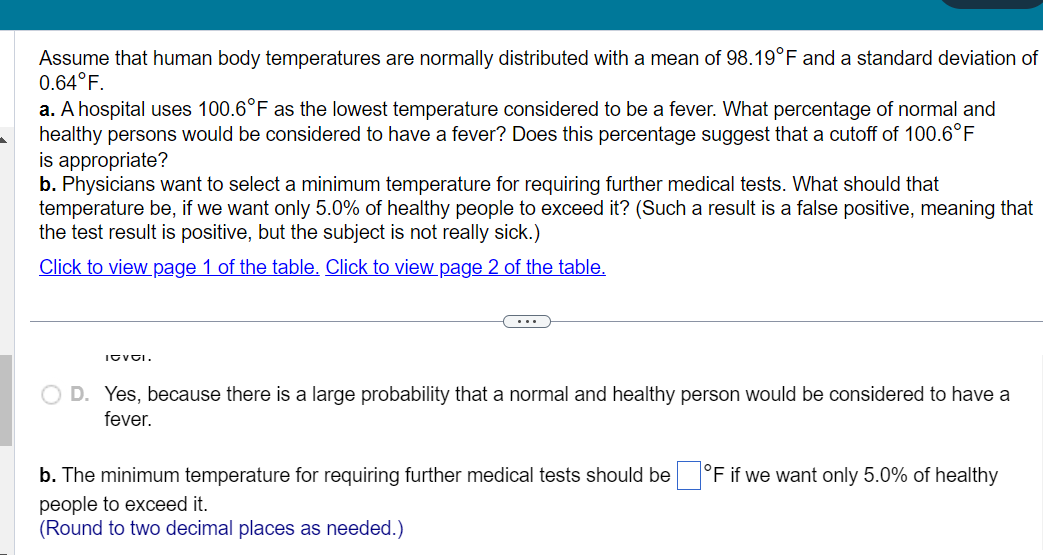Home /
Expert Answers /
Statistics and Probability /
assume-that-human-body-temperatures-are-normally-distributed-with-a-mean-of-98-19f-and-a-standar-pa704
(Solved): Assume that human body temperatures are normally distributed with a mean of 98.19F and a standar ...

Assume that human body temperatures are normally distributed with a mean of and a standard deviation of . a. A hospital uses as the lowest temperature considered to be a fever. What percentage of normal and healthy persons would be considered to have a fever? Does this percentage suggest that a cutoff of is appropriate? b. Physicians want to select a minimum temperature for requiring further medical tests. What should that temperature be, if we want only of healthy people to exceed it? (Such a result is a false positive, meaning that the test result is positive, but the subject is not really sick.) . D. Yes, because there is a large probability that a normal and healthy person would be considered to have a fever. b. The minimum temperature for requiring further medical tests should be people to exceed it. (Round to two decimal places as needed.)
Expert Answer
To solve these problems, we will use the properties of the normal distribution. a. To find the percentage of normal and healthy persons considered to have a fever, we need to calculate the percentage of individuals whose body temperature is greater than or equal to 100.6°F. First, we need to standardize the temperature value using the formula: z = (x - ?) / ? where: z is the standardized score, x is the temperature value, ? is the mean of the distribution, and ? is the standard deviation of the distribution. Using the given values: x = 100.6°F ? = 98.19°F ? = 0.64°F Calculating the standardized score: z = (100.6 - 98.19) / 0.64 z ? 3.77